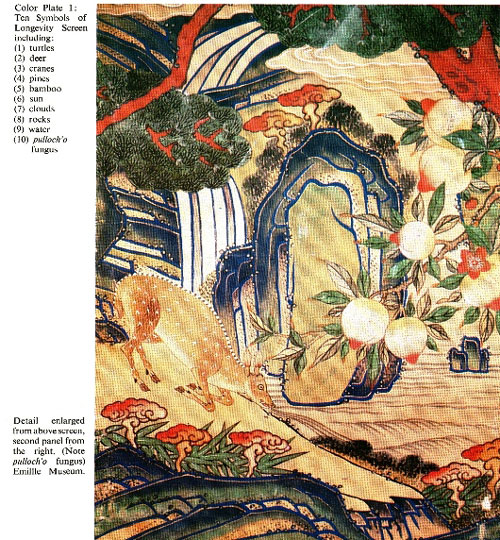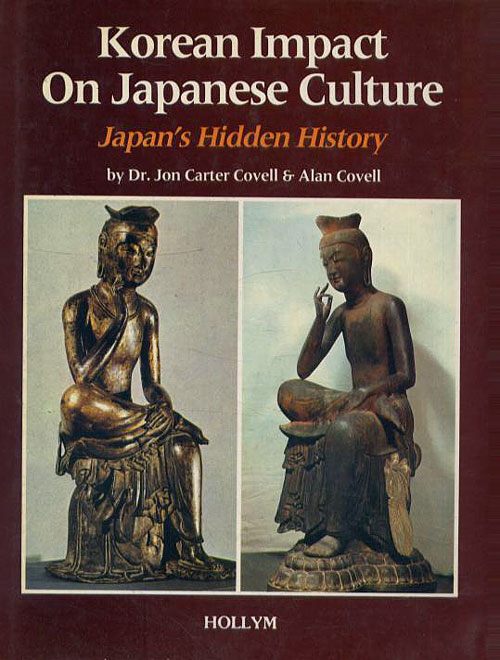
Author: Dr Jon Carter Covell, Published by: Weatherhill
Specifications: 122pp. 18x24cm. 35 color plates. 196 b/w plates. hardcover.
page from Jon Carter Covell's Korea's Cultural Roots (1980, Hollym), showing a small part of a painting that she photographed at the Emille Museum. It is still a wonderful book that was my own introduction to this motif, and in general my initial inspiration for all these years of studying traditional Korean spiritual culture.
This is a book for anyone fascinated with Asian culture. Dr. Jon Carter Covell, Japanese and Korean art history scholar, makes you enjoy the book and be unfamiliar with the Korean culture. The book is divided into three parts: Shaman Roots, Buddhist Roots, and Neo-Confucian Roots. The headings may sound academic, but the subjects are very interesting and written for the layman.
Shaman Roots will be intriguing. It explained the history and significance of the Korean reindeer with the golden antlers, also known as the famous Silla golden crown. You will be also interested by the chapter on long life goals - the Koreans have ten symbols of longevity. Korea's set of longevity symbols are more numerous and somewhat different from China's and Japan's and elicit much attention in Korean art. Included are separate chapters on evil-repelling symbols, good luck symbols, and special spirits. 
Korean Impact On Japanese Culture
Publisher: Hollym International Corporation
Product Dimensions: 9.4 x 7.2 x 0.5 inches
"Japanese culture," up to the eighth century, derived primarily from Korea--whether it was music, landscape gardening, textiles, ceramics, or major masterpieces of architecture, sculpture, and painting. Top "National Treasures" of Japan either came from Korea or were sponsored by Korean-descended aristocrats, such as the famed Shotoku Taishi, who imported artists and Buddhist priests to the islands.









